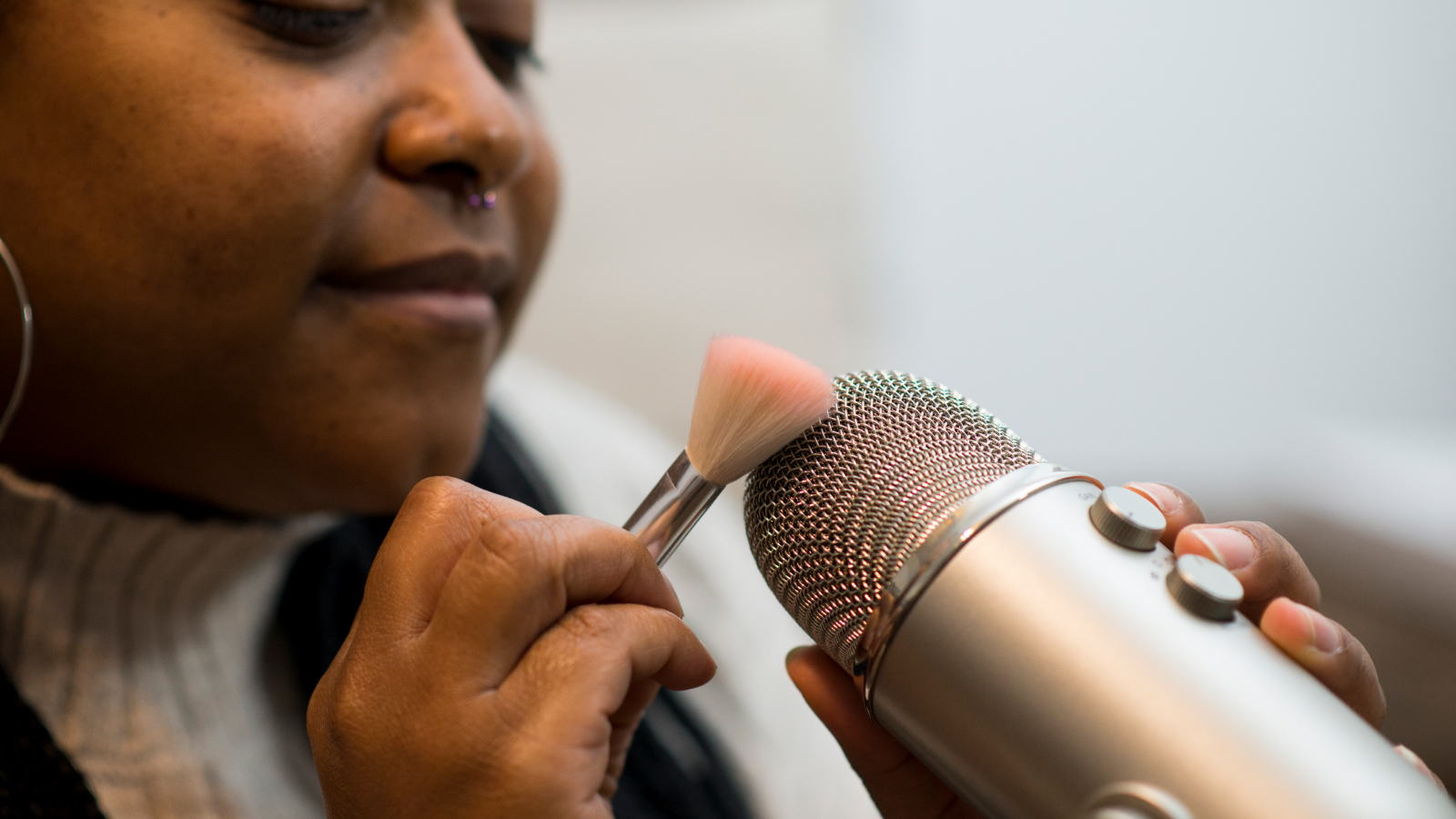
A makeup brush swirling around a microphone, scissors gently snipping through thread, a person softly whispering — a search for "ASMR videos" turns up these and many more alluring sounds, and the catalog of videos has only grown since the phenomenon took the internet by storm in the 2010s.
But what, exactly, is ASMR, and how does it work? And can everyone experience ASMR?
ASMR stands for "autonomous sensory meridian response." Coined in 2010 by Jennifer Allen, who later founded online forums for ASMR, the term refers to a spontaneous, or automatic, sensation that's triggered by some stimulus and crescendos to a peak.
The phenomenon itself has different meanings for different people, said Giulia Poerio, a psychologist at the University of Sussex in the United Kingdom. But most researchers and listeners agree that ASMR has two major components: a tingly or "sparkly" sensation that begins in the head and then spreads down the spine, and a sense of euphoria and relaxation.
"It's kind of like having your hair stroked," Poerio told Live Science. Alternatively, ASMR feels a little like the chills that some people experience when listening to music, she said. But while music-induced chills can make your heart beat faster and your hair stand on end, ASMR tends to lower a person's heart rate and slow their breathing.
Related: What causes tinnitus, and can it be treated?
People experience ASMR in response to triggers, which can take lots of forms. "ASMRtists" who whisper into and tap their fingers upon microphones are particularly popular on YouTube. But in addition to auditory stimuli, tactile sensations, such as someone gently brushing your hair, can trigger ASMR, according to Poerio.
A whispery video or a comforting touch isn't enough to trigger ASMR on its own, though; people typically need to feel calm and safe in their environment for the sensation to materialize, said Craig Richard, a physiologist at Shenandoah University in Virginia and founder of ASMR University, an informational website.
ASMR content creators sometimes achieve this by creating a sense of familiarity with their audiences, said Richard, who also has a book and podcast about ASMR. In a 2018 study, Richard and colleagues proposed that many ASMR triggers are related to "affiliative behaviors," meaning caring behaviors exchanged between people with close interpersonal bonds, such as friends, parents and children, and romantic partners.
"If you look at almost any major, top ASMR video, it's someone pretending that they know you really well," Richard told Live Science. "It's sort of tricking your brain into thinking someone you know and are comfortable with is giving you positive personal attention."

A mix of neurotransmitters — chemical messengers of the nervous system — could be behind the phenomenon, Richard said, although researchers are still working to confirm the exact mechanism by which ASMR works.
In the 2018 study, the scientists found that certain regions of the brain become more active when people experience ASMR. They showed this using functional MRI scans, which indirectly measure brain activity by looking at blood flow through the organ.
Related: How do brain cells send messages?
Part of the brain called the medial prefrontal cortex (mPFC) lit up when people experienced relaxing or tingling sensations while watching ASMR videos. The mPFC is involved in myriad functions, including processing and directing social behaviors such as grooming. This might explain why gentle touches and caring interactions are common ASMR triggers. Oxytocin, a neurotransmitter and hormone associated with relaxation and social bonding, binds to receptors in the mPFC and could thus be involved in the relaxation that ASMR delivers.
Another part of the brain called the nucleus accumbens also lit up when study participants experienced brain tingles. This brain region helps direct motivated behaviors driven by reward and satisfaction, and it activates when people experience music-induced chills. Although ASMR and music chills don't feel quite the same, they might come about through a similar pathway, Richards and his co-authors theorized.
Not everyone experiences ASMR, and scientists are still trying to understand why.
"There's probably a neural basis to it, in terms of how your brain forms and your experiences in earlier development," Poerio said. Some studies have found that people with certain personality traits, such as neuroticism or openness to new experiences, are more likely to experience ASMR than those without these traits.
For some, though, it may be that they simply haven't yet found the right trigger for ASMR.
"Some will say that it's taken them 100 ASMR videos to find the type of trigger that works for them," Richard said. Then again, some people never experience ASMR from watching videos, he noted, but something in the real world might trigger the sensation.
Ever wonder why some people build muscle more easily than others or why freckles come out in the sun? Send us your questions about how the human body works to community@livescience.com with the subject line "Health Desk Q," and you may see your question answered on the website!







